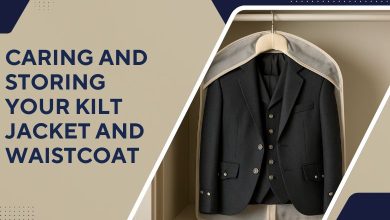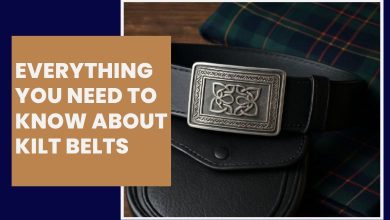Kilt Hose vs. Regular Socks: How They’re Different
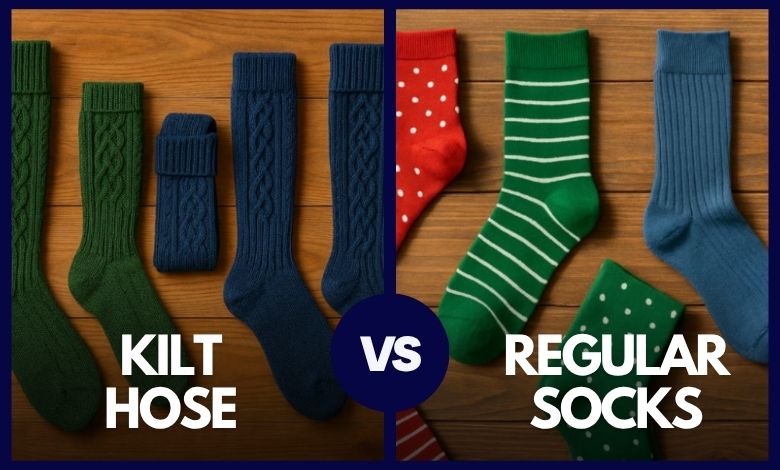
Most parts of the kilt outfit are a competitor to any standard attachment. The sporran was invented as an alternative to pockets, and Ghillie Brogues as standard shoes. Similarly, kilt socks, known as kilt hoses, are replacement for the standard socks. Therefore, Scottish hoses today are very different from standard socks in design and length due to their cultural importance. This article will discuss the dissimilarities between kilt hose and regular socks, suitable events for both, and more. But, the first thing should be understanding both variations.
Table of Contents
ToggleWhat Are Kilt Hose?
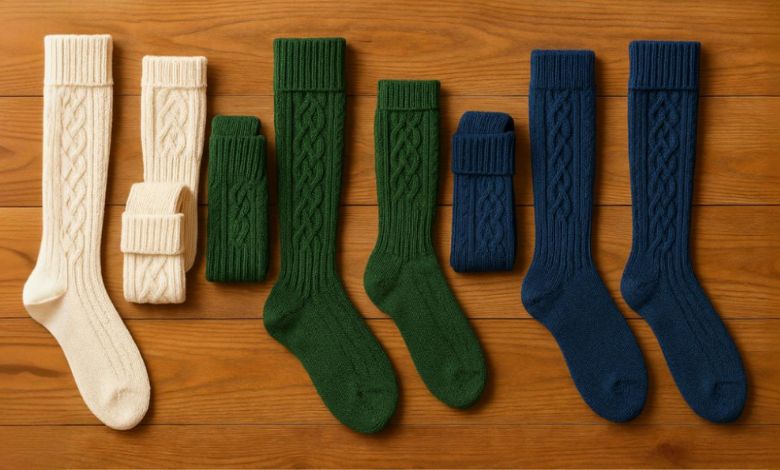
Kilt hoses are the long socks that Scots wear with their traditional Highland attire. Usually made of wool, they were meant to prevent freezing temperatures in mountain terrains. Their length (3-4 inches below the knee) and construction with wool were quite helpful. In the current era, they serve a practical purpose but they hold more worth in Scotland because of being a traditional part of attire and celebrate Scottish heritage.
Types of Kilt Hose
Kilt hoses are available in many variations today and every type is suitable for different settings. Below are some popular classifications of kilt socks.
Solid Coloured Socks: These hoses are the traditional ones and are usually worn at strict formal events.
Tartan Patterns: This variation is made with the same pattern of the tartan that a person currently wears. It is a top choice for formal and semi-formal events.
Dice Patterned Hoses: Kilt hoses with a double-diamond or “dice” design, commonly known as the Gairloch pattern, are knee-high and patterned.
Emblem Socks: These socks are decorated with Celtic or Scottish symbols such as thistles and stags.
What Are Regular Socks?
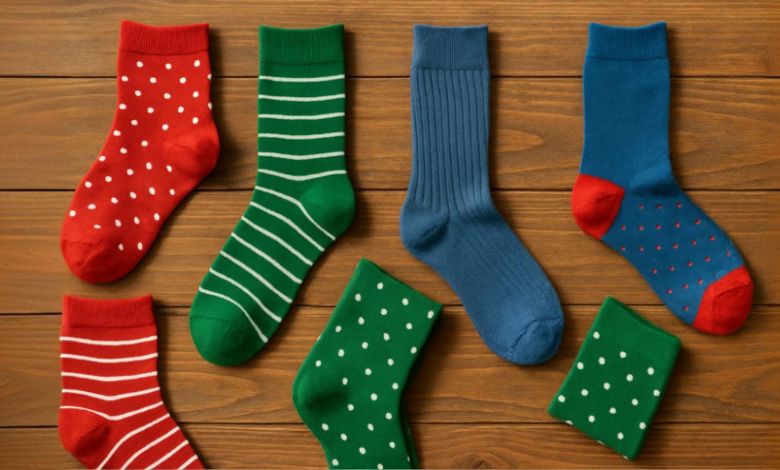
Standard socks, also known as crew socks, have a popular sock length that covers the leg to the middle of the calf. These may be worn to a variety of events including formal settings, sporting events, and casual wear. Their flexibility and coverage make them a mainstay in many sock drawers. For sports or other activities that require greater leg covering, crew socks are appropriate since they offer a fair degree of foot protection and coverage.
Kilt Hose vs. Regular Socks: Key Differences
Kilt hose and regular socks differ significantly from each other. These differences begin with their sizes, history, and traditional importance and lead to accessories that are paired with these anklets.
Length, Fit, and Thickness
Kilt Socks: Kilt socks are larger and cover legs 3-4 inches below the knees. They have a snug fit and are traditionally thick to prevent cold weather.
Regular Socks: Regular socks have several sizes covering from the ankles to the upper part of the calf. These socks are versatile and their fit and thickness varies according to the region where they are to be worn.
Material Used
Kilt Hoses: Traditionally wool is the most preferred material for kilt socks. However, fabrics like nylon and other synthetic materials have become popular now. All fabrics making kilt socks are warm and durable.
Standard Socks: The common materials used to make standard socks include cotton, polyester, nylon, and combinations of these materials. Because it is comfortable and breathable, cotton is the most considerable material for daily socks.
Design Patterns and Colors
Kilt Socks: Kilt hoses represent Scottish tradition and they sometimes have tartan patterns that match the kilts for men. Similarly, those embroidered with Scottish symbols are common to spot.
Typical Socks: Standard socks, on the other hand, are for everyone making them versatile options. With colors in perspective, the sky’s the limit while they have a variety of designs, from classic stripes and argyle to playful polka dots and novelty prints.
Purpose and Occasions for Wear
Kilt Hoses: Today, their primary purposes are to honor the culture and complete traditional attire. They are worn at every type of event from formal to casual ones. The material and patterns provide them with suitability for several settings.
Typical Socks: The purpose of standard socks is to create a comfortable layer between feet and shoes. Similarly, their other aim is to safeguard our feet from the rigors of footwear.
Accessories Unique to Socks
Kilt Hoses: There are two kinds of accessories to be attached to hoses: kilt flashes to prevent socks from falling. Similarly, they serve as a way to hold Sgian-dubh, the traditional Scottish knife.
Standard Socks: No, it’s not typical to attach accessories directly to standard socks. While socks themselves have become a fashionable accessory, they are generally worn without any attached items.
Pricing Range
Kilt Hose: They are usually more expensive due to their special construction and specific material. Similarly, the length of the fabric also increases its prices to a particular level.
Standard Socks: Typical socks do not have a fixed price range since they are made for both affordability and luxury purposes.
Comparison Table
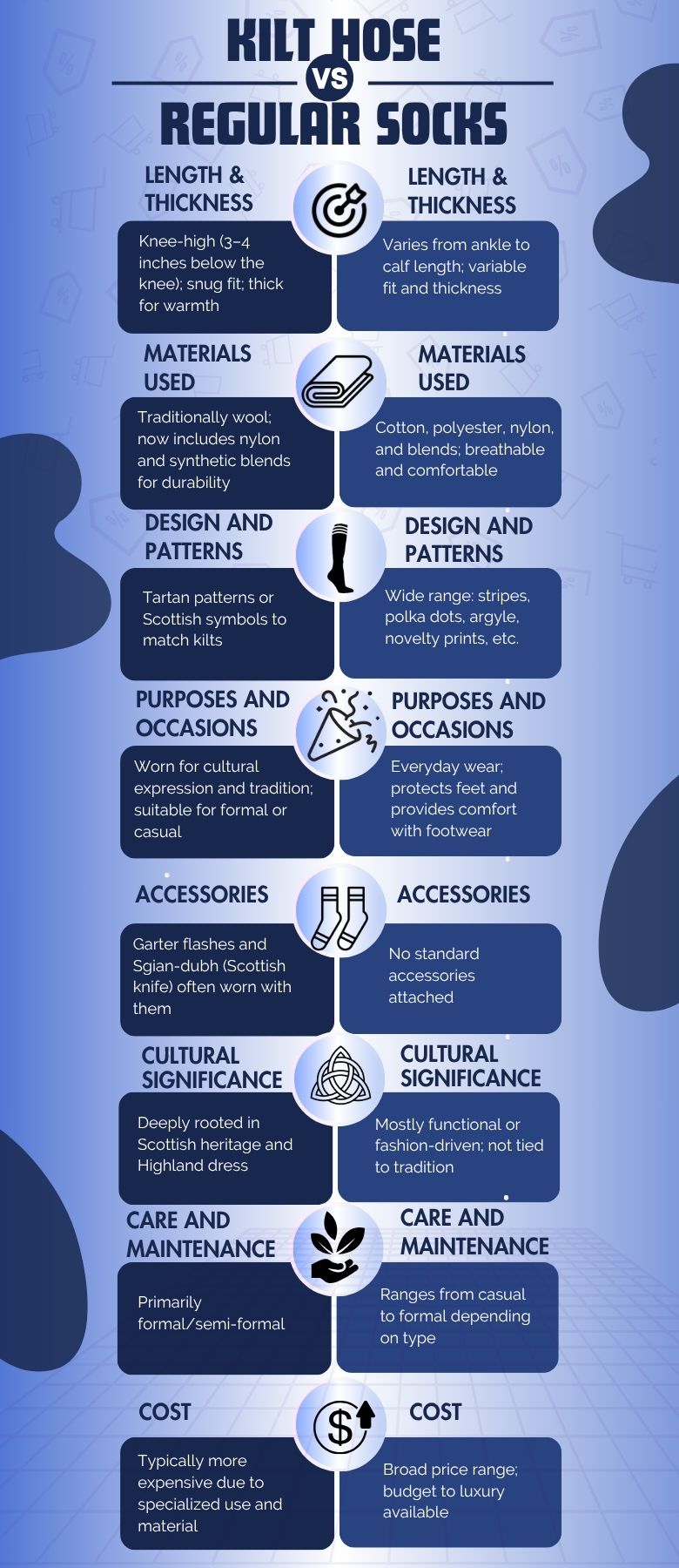
| Features | Kilt Hose | Regular Socks |
| Length & Thickness | Knee-high (3–4 inches below the knee); snug fit; thick for warmth | Varies from ankle to calf length; variable fit and thickness |
| Materials Used | Traditionally wool; now includes nylon and synthetic blends for durability | Cotton, polyester, nylon, and blends; breathable and comfortable |
| Design and Patterns | Tartan patterns or Scottish symbols to match kilts | Wide range: stripes, polka dots, argyle, novelty prints, etc. |
| Purposes and Occasions | Worn for cultural expression and tradition; suitable for formal or casual | Everyday wear; protects feet and provides comfort with footwear |
| Accessories | Garter flashes and Sgian-dubh (Scottish knife) often worn with them | No standard accessories attached |
| Cultural Significance | Deeply rooted in Scottish heritage and Highland dress | Mostly functional or fashion-driven; not tied to tradition |
| Care and Maintenance | Requires gentle care, especially with wool | Generally machine washable and easy to maintain |
| Cost | Typically more expensive due to specialized use and material | Broad price range; budget to luxury available |
| Seasonal Sustainability | Ideal for cooler climates due to thickness | Available for all seasons: thermal or lightweight styles |
The Cultural Importance of Kilt Hose
Scottish socks have a long history dating back to the 16th century when men in Scotland started dressing more often in kilts. These socks evolved progressively into increasingly elaborate and elaborate designs. They started to exhibit distinctive patterns that were particular to clans or families, and each pattern had a distinct significance.
Kilt socks have elaborate patterns and motifs that reflect the tale of Scotland’s rich cultural past. The features make them both beautiful and useful. In short, they bring a sense of cultural flair to any ensemble and are suitable for every occasion. Similarly, they are worn as a fashion item or as a compulsory part of traditional Scottish attire.
Styling Tips for Kilt Hose and Regular Socks
When it comes to styling tips for kilt hose and regular socks, the techniques are also different. Wearers take the length of hoses to the lower part of the knee. They are meant to be seen below the lower end of the kilt. Usually, the patterns or the colors of socks coordinate with the style of tartan kilts to represent the culture.
Regular socks, on the other hand, are a bit different to pair with an outfit. Wearers should consider the shoe type, colour, and design in connection with the attire. Choose socks that are either brighter or darker than pants, or match them to a secondary colour in your ensemble for a unified effect. Particularly in informal situations, you can also defy convention and wear socks with patterns or striking designs.
Approach UtilityKilt UK for Exceptional Range of Kilt Socks
Are you aware of another difference between kilt hoses and normal socks? It is their availability in different regions. Standard ones are available everywhere and you have to find a reliable shop to purchase kilt socks. Finding a reliable store might be a concern but you don’t have to worry about it because Utility Kilt UK is always there to help you by offering exceptional kilt hoses. Not only kilt socks, but we also offer all Highland kilt accessories from jackets to garter flashes.
Frequently Asked Questions About Regular and Kilt Socks
Can kilt hose be worn with non-traditional outfits?
Yes, they can be worn, but there is a condition: the event’s theme must be casual. Wearing non-traditional attire is not a good idea, especially in Scotland.
Are kilt hoses suitable for sports or physical activities?
Often worn with Scottish attire, knee socks, sometimes known as kilt hose, are made to remain up when a person is busy in physical ventures. Sports and physical activities, especially outdoor activities and traditional Scottish festivals, are appropriate for them.
What are the most common mistakes people make when wearing kilt hose?
Usually, those new to the world of kilts make a few mistakes that may seem minor but are against the etiquette.
- Wearing Them Too Low
- Improper Folding of the Turnover
- Incorrect Flashes Placement
- Wrong Sock Thickness or Style
What’s the best way to prevent the kilt hose from slipping down?
It is to attach garter flashes that Scots have been wearing traditionally.
